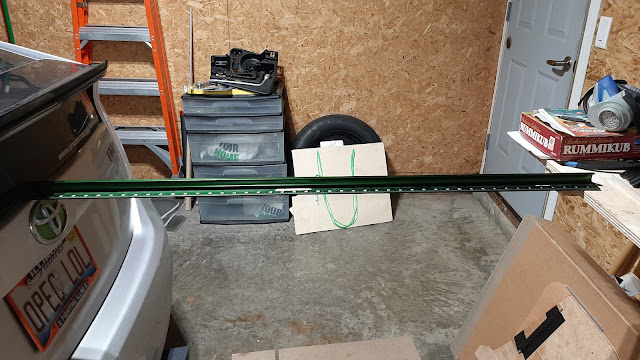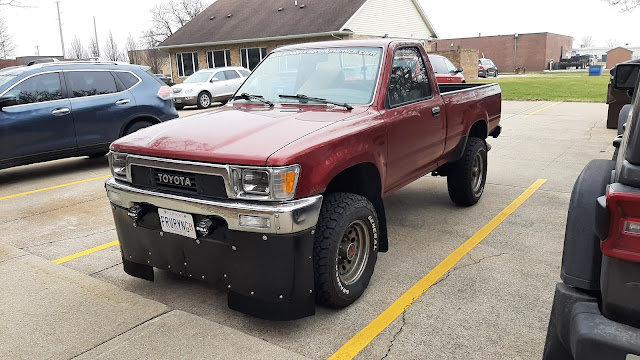Formulating
Requirements
Before I
begin testing (and especially before I begin construction!), I want to identify
the requirements my tail should meet. “Requirements” specify the objectives a
design must fulfill and how it should achieve them. Requirements can be split
into two categories: technical (or engineering) and stakeholder. Stakeholder
requirements lay out the needs or desires of all stakeholders in a project (in
this case, that’s just me). Technical requirements specify the performance
objectives a design must fulfill in exact language with specific, measurable goals.
TECHNICAL
REQUIREMENTS
Length
I wrote in
my first post that tails are a good option for reducing drag if you don’t care
about the length of your car—since a tail requires length to function, adding
length to your car is unavoidable if you decide to build one.
But how much
length you’re comfortable adding is something you’ll have to decide. My car
still has to fit in my garage (first constraint), and since I street park on
school days I want to be able to parallel park it easily (second constraint).
The first of those is easily measured:
 |
| That’s a 48 in. straight edge. This is the absolute maximum length I could choose for my tail and still fit the car in my garage—but, given my second constraint, my final design length will need to be shorter than this. |
The second constraint is less exact—but I can take a cue from production cars.
What I did
was look up the 10 best-selling cars in the US last year and then visit each
manufacturer’s website to get accurate dimensions. Then, I entered the
vehicles’ lengths in a spreadsheet, calculated the average minimum and maximum
lengths, took the midpoint of those, and subtracted my car’s length to get my
maximum tail length:
A tail of
this length will put my car right at the midpoint between the average shortest
and longest length of the 10 most popular cars in the US—shorter than a full-size truck but longer than a sedan like the Camry. This gives me a
metric that at least correlates to typical “parkability.” Now, I can write my
first technical requirement for the tail design.
Technical
Requirement #1: The tail shall have a length not exceeding 672 mm (26.5 in)
extending from the furthest rearward point of the rear bumper cover.
You might
decide on a different method to determine the allowable length of your
tail—that’s perfectly fine! I could instead have decided to limit my tail to
the average length of the shortest configuration of full-size pickups, for
instance. Since that would make street parking a lot harder, though, I decided
to go with my averaging method. That will constrain tail length and make its
design more challenging, but by no means impossible.
Aerodynamic
Drag
Now that I
have a maximum length established, I’ll visit perhaps the most important
requirement: by how much do I want this tail to reduce drag? “As much as
possible” isn’t an answer to that; if you don’t have a number to shoot
for, then your requirements are not fully established.

This one’s
kind of shooting in the dark but based on reported fuel economy from cars with
(unoptimized) tails on Ecomodder and Youtube, I think it’s achievable. Now I can write my
second technical requirement for the tail design.
Technical
Requirement #2: The tail shall reduce aerodynamic drag of the vehicle by at
least 15%.
Of course,
if I can go lower than this, all the better. I'll elaborate on how I plan to measure this when I get to that point in the development process later this summer.
Weight
Since
weight can affect fuel economy as much as aerodynamic drag, I want to be cognizant of adding as little of it as possible. A
maximum weight target is a little harder to formulate since I don’t know what
design I’ll use for the tail or exactly what materials I’ll use. But I’m pretty
sure I’ll build it out of some sort of polystyrene board and fiberglass or
carbon fiber reinforced plastic composite—similar to surfboard, solar car,
experimental airplane or other lightweight vehicle construction. A quick
estimate of 3.8 m2 tail surface with two transverse reinforcing ribs
would require ~5 kg foam and ~15 kg fiberglass reinforced plastic. Taking a
little more than these estimates gives me my third engineering requirement.
Technical
Requirement #3: The tail shall have a mass less than or equal to 25 kg (55 lb).
Cost
Lastly for
my engineering requirements, I need to identify a maximum cost so I can budget
for this. As a home builder, my funds are not unlimited (especially
since I’m paying tuition out of pocket)—so this requirement is especially
important to me. This is another area where it’s tempting to say “as little as
possible,” but that isn’t specific or helpful. Instead, I’ll take my estimates
of the required 1” foam board and CFRP (the more expensive cloth) and sum their
costs, plus a little extra for hardware and incidentals.
Technical
Requirement #4: The tail, associated materials, and construction shall have a
total cost less than or equal to $750.
As with my
other technical requirements, if I can do better than this I will. Since I don’t
have a design yet and consequently don’t know how I will construct this, this requirement
has the potential to be undercut if I’m smart about reusing materials I already
have on hand, for example.
STAKEHOLDER
REQUIREMENTS
These
requirements are a bit easier to identify—since I am the only stakeholder here!
It’s my car, my tail project, and ultimately, I can do whatever I want with it.
With no investors, supervisors, marketers, accountants, or other engineers to
satisfy, these requirements are literally just a list of what I want the tail
to do:
Stakeholder
Requirement #1: The tail shall be affixed to the rear of a 2013 Toyota Prius
and shaped to reduce aerodynamic drag of the car.
Stakeholder
Requirement #2: The tail shall be constructed of materials of sufficient
stiffness and robustness that it is impervious to normal weather and
atmospheric conditions, resistant to UV degradation in sunlight, and does not
deflect, bend, oscillate, or otherwise behave undesirably under aerodynamic and
dynamic loading.
Stakeholder
Requirement #3: The tail shall conform to all Illinois state laws governing
motor vehicles operated on public highways.
Stakeholder
Requirement #4: The tail shall be removable from the vehicle with no permanent
alteration to the vehicle aside from rivet nut inserts.
That’s
really it for now—I can always add more requirements if I think of anything
pressing. I did not add a requirement for hatch functionality since, after
thinking about it, I’m okay with losing access to the back of the car through
the hatch. There’s plenty of access through the rear doors, and while I will
lose the use of my hatchback tent, the car is still perfectly suitable for
camping.
 |
| It's surprisingly roomy back there. |
Onward
Now that
I’ve taken the time to identify and write out my requirements, the process of
designing and building the tail will have some direction to it. In reality, any
project like this has requirements, whether explicit or implicit—but making
them explicit required that I think about them and identify what, exactly, I
want this tail to do and how I want it to do it. That will make the process of
design and construction easier in the long run.







Comments
Post a Comment